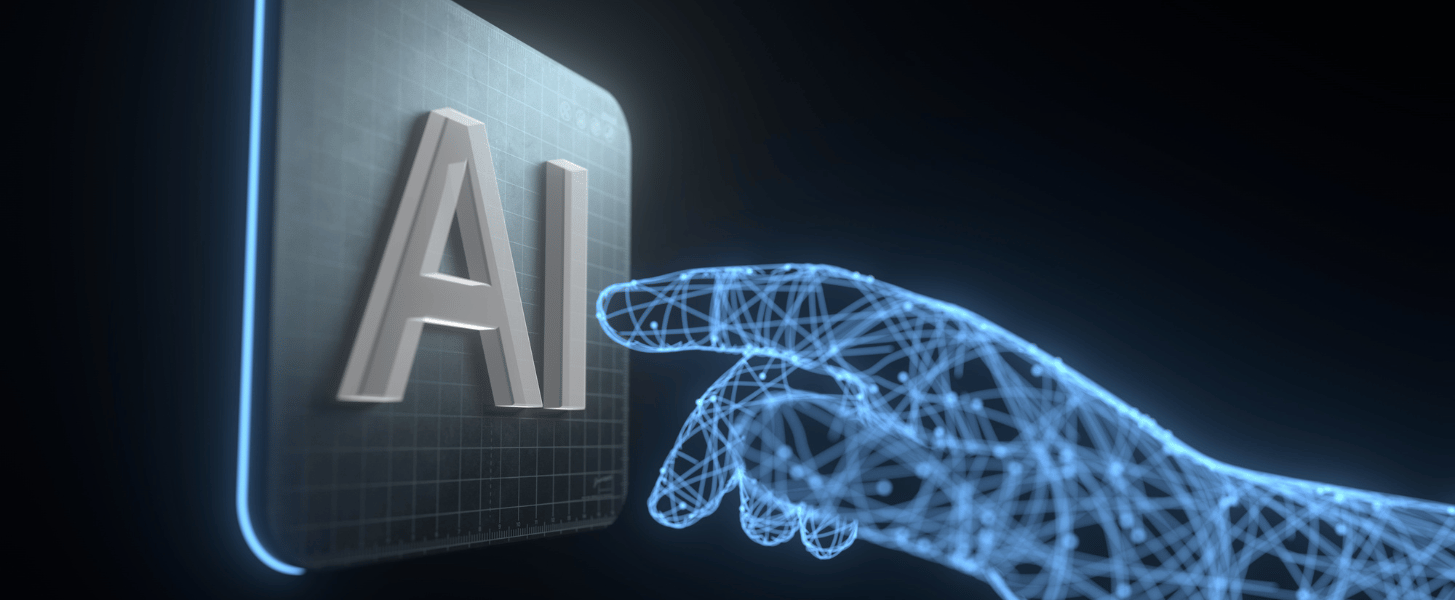Common Area Maintenance (CAM) reconciliation has traditionally been a time-consuming and error-prone process. The importance of CAM reconciliation is crucial for both landlords and tenants, as it ensures fair allocation of common area maintenance expenses. It involves reconciling tenant contributions with actual expenses incurred by the landlord for shared services such as landscaping, security, snow removal, utilities, and general upkeep of common areas. Estimated expenses play a significant role in CAM reconciliation, affecting both landlords and tenants by highlighting the need to recoup costs when actual expenses exceed estimates and providing opportunities for reimbursements when overpayments occur. The process demands accuracy, timely data entry, and continuous monitoring across multiple properties. Artificial Intelligence (AI) is now revolutionizing how this task is approached, bringing automation, accuracy, and strategic insights into CAM reconciliation processes.
Automating Invoice Processing for CAM Reconciliation
One of the most impactful applications of AI in CAM reconciliation is in invoice processing. Traditional invoice processing requires manual data extraction, classification, and validation—a labor-intensive process prone to errors and inefficiencies.
AI-Powered Invoice Extraction
AI-based Optical Character Recognition (OCR) tools can read and extract key data points from scanned invoices, including vendor names, dates, amounts, tax codes, and line-item details. These tools not only digitize paper-based documents but also structure the extracted information into usable formats that feed directly into accounting systems.
By ensuring all data is correctly captured and categorized, AI-powered invoice extraction significantly enhances the accuracy of reconciliation statements, which are crucial for managing and auditing financial transactions related to tenant expenses.
Smart Categorization
AI algorithms classify expenses into the correct CAM categories—such as janitorial services, HVAC maintenance, or utility bills—based on learned patterns and historical data. Correctly categorizing non controllable CAM expenses is crucial to ensure accurate expense allocation, as these costs are largely unavoidable and not subject to landlord control. This eliminates human error and ensures that expenses are appropriately allocated, simplifying the reconciliation process at year-end.
Real-Time Validation
AI systems cross-reference extracted data with lease terms, budget limits, and historical invoices to flag inconsistencies or unusual charges. This real-time validation significantly reduces the chances of overbilling or under-allocating expenses across tenants.
Additionally, real-time validation supports audit rights by providing accurate and timely data for audits.
Want to see how AI is reshaping CAM practices in real estate? Watch our quick webinar clip to explore real-world applications and expert insights.
AI for Automated Lease Data Updates
Lease agreements often contain clauses related to CAM charges, expense caps, gross-up provisions, and cost-sharing mechanisms. AI helps manage ‘additional rent’ clauses in lease agreements by automatically updating lease data. These lease terms frequently change due to amendments, renewals, or negotiations.
AI-Driven Lease Abstraction
Natural Language Processing (NLP) enables AI to read and interpret complex lease documents, extracting key clauses related to CAM reconciliation. This includes terms like base year, expense stops, exclusions, and escalation clauses. AI abstracts and updates this information automatically into lease administration systems. Additionally, AI-driven lease abstraction identifies tenant-specific exclusions and ensures they are accurately reflected in lease administration systems.
Dynamic CAM Allocations
Changes in lease terms directly affect how CAM expenses are distributed. AI recalculates the pro rata share based on updated lease terms, ensuring fair distribution of CAM expenses. AI automatically recalculates tenant shares and updates billing systems to reflect new terms. This automation reduces the administrative burden and ensures billing accuracy.
Enhanced Accuracy and Auditability
Error Reduction
By removing manual data entry and classification, AI drastically lowers the chances of human error. Smart algorithms catch anomalies, missing data points, and inconsistencies that might otherwise go unnoticed. Additionally, AI minimizes human errors in CAM reconciliation by automating data entry and validation.
Improved Audit Trails
AI systems maintain comprehensive logs of data inputs, system actions, and validations. These logs create a transparent and traceable audit trail that simplifies internal audits and regulatory compliance.
Additionally, AI systems integrate with the general ledger to ensure all transactions are accurately recorded and traceable, confirming that entries align correctly with respective accounts and buildings.
Tenant Transparency
Automated reporting tools powered by AI generate easy-to-understand summaries for tenants, explaining how CAM charges are calculated. This increases tenant trust and reduces disputes over shared costs. Additionally, AI-generated reports provide an itemized breakdown of CAM charges, enhancing transparency for tenants.

Outsourcing CAM Reconciliation with AI-Enabled Partners
Why Outsource?
Many real estate firms are turning to third-party service providers to handle CAM reconciliation. Outsourcing reduces the burden on internal teams, cuts costs, and ensures that industry best practices are followed. With AI integration, outsourcing becomes even more beneficial. CAM reconciliation can be extremely time consuming due to meticulous manual reviews and cross-checking against lease agreements, but outsourcing helps mitigate this challenge.
Benefits of AI-Driven Outsourcing
- Scalability: AI-enabled providers can handle large volumes of invoices and leases with minimal delay.
- Expertise: Outsourcing firms often employ specialists in lease administration and CAM reconciliation, equipped with AI-powered tools.
- Speed: Automation accelerates the entire process—from data extraction to reconciliation—allowing for faster year-end closings.
- Accuracy: AI reduces manual errors, ensuring precise calculations and fair allocations.
- Cost Efficiency: Businesses save on hiring and training internal teams by leveraging AI-backed third-party services.
- Negotiating Power: AI-driven outsourcing enhances negotiating power with vendors by providing data-driven insights.
Predictive Analytics for CAM Budgeting
Forecasting CAM Expenses
AI systems analyze historical CAM expenses, seasonality, inflation rates, and vendor pricing to forecast future CAM costs. These forecasts help property managers plan budgets more accurately and allocate resources effectively.
Additionally, AI considers expense limits when forecasting CAM expenses to ensure accurate budgeting by capping specific controllable expenses such as marketing, advertising, labor, or supplies.
Identifying Cost Anomalies
Predictive algorithms identify outliers or spikes in expenses—such as a sudden increase in landscaping costs or utility usage. Property managers can investigate and address issues proactively, avoiding surprises during reconciliation.
AI also helps identify controllable costs and manage them effectively to reduce overall CAM expenses.
Intelligent Vendor Management
AI-Enhanced Procurement
AI tools evaluate vendor performance based on historical data, response times, pricing trends, and tenant satisfaction. Property managers can make data-driven decisions when selecting or renegotiating vendor contracts. Additionally, AI helps manage procurement for shared spaces by evaluating vendor performance and costs, ensuring efficient maintenance of common areas like lobbies and parking lots.
Contract Compliance
AI monitors vendor invoices to ensure compliance with contractual terms. This includes verifying service frequencies, invoice amounts, and adherence to performance SLAs. Non-compliance is flagged automatically, allowing for quicker resolution.
Additionally, AI ensures that vendor invoices comply with the terms of the lease agreement, preventing overcharges related to common area maintenance (CAM) expenses.
Centralized Dashboards and Real-Time Reporting
Unified View
AI consolidates data from various sources—leases, invoices, service contracts, and expense reports—into centralized dashboards. These dashboards provide real-time visibility into CAM-related metrics and key performance indicators (KPIs). Additionally, AI dashboards offer a unified view of common area maintenance charges, facilitating better management and transparency.
Customizable Reporting
Users can generate custom reports based on property, tenant, service type, or time period. These reports support strategic decision-making and streamline board-level reporting. AI-generated reports also help calculate pro rata shares for accurate expense allocation.

AI for Compliance and Regulation in CAM Reconciliation
Lease Compliance
AI checks whether CAM charges align with lease clauses and flags any deviations. For example, it can alert if charges exceed cap limits or if excluded expenses have been billed. Additionally, AI ensures tenants pay only their fair share of CAM charges according to lease terms, including the process of CAM reconciliation to prevent overcharging.
Accounting Standards
With standards like ASC 842 and IFRS 16 impacting how leases are reported, AI ensures that CAM-related entries are aligned with accounting rules. This simplifies financial reporting and audit preparation. Additionally, AI helps ensure that operating costs related to CAM charges are properly reconciled, promoting transparency and fairness for both tenants and landlords.
Data Security and Confidentiality
AI systems used in CAM reconciliation often come with advanced encryption and access controls to safeguard sensitive lease and financial data. Outsourced providers must comply with industry regulations like GDPR or SOC 2.
These systems ensure data security and confidentiality for both tenants and the property owner, preventing unauthorized access and potential disputes.
Integration with Lease Administration Systems
Seamless Data Flow
AI platforms can integrate directly with lease administration and ERP systems, eliminating data silos and duplication. Real-time syncing ensures that any updates to lease terms or expense entries are reflected instantly across all systems. Additionally, AI ensures that CAM charges cover all relevant expenses accurately, helping to avoid overpayments and ensure fairness in operating expenses.
Reduced Training Requirements
User-friendly AI interfaces and guided workflows reduce the learning curve for new employees and support faster onboarding. This is particularly useful for firms with high staff turnover or rapid expansion.
Additionally, AI tools help increase tenants’ understanding of CAM charges, reducing the need for extensive training.
Challenges and Considerations
Data Quality
AI is only as effective as the data it receives. Incomplete or inconsistent lease documentation and invoice records can limit the potential benefits. Pre-processing and data hygiene measures are critical. AI ensures data quality by accurately capturing ‘lump sum’ payments in CAM reconciliation, simplifying budgeting and offering financial benefits to both tenants and landlords.
Change Management
Transitioning from manual to AI-assisted CAM reconciliation involves a cultural shift. Staff must be trained to work with new tools, and internal workflows need to be adapted.
AI helps manage changes in CAM charges tenants based on updated lease terms, ensuring accurate allocation of expenses among tenants.
Technology Investment
While AI delivers significant ROI over time, the initial investment in technology and integration can be substantial. Companies must conduct a cost-benefit analysis before full-scale implementation.
Additionally, integrating machine learning with AI in CAM reconciliation enhances accuracy and provides deeper insights, simplifying audits and allowing teams to focus on more complex accounting tasks.
Choosing the Right Solution
It’s essential to evaluate AI vendors based on accuracy, ease of use, integration capabilities, customer support, and scalability. A poor implementation can result in operational disruptions.
AI tools can also help manage ‘gross ups’ in CAM charges, ensuring fair expense allocation.
Future Outlook
Expanding Use Cases
AI will increasingly be used for other lease-related tasks beyond CAM reconciliation—such as security deposit tracking, lease renewals, and space utilization analytics.
Additionally, AI will expand its role in CAM reconciliations by improving the accuracy of estimating and comparing actual expenses, addressing the complexities of unique lease terms, and ensuring precise documentation.
Autonomous Reconciliation
The future may see fully autonomous CAM reconciliation systems that process invoices, interpret lease terms, and generate final reconciliations with minimal human intervention.
These systems will ensure that tenants paid the correct amounts for CAM charges by accurately comparing actual CAM costs against the payments made by tenants.
Blockchain for Transparency
Combining AI with blockchain can further enhance transparency in CAM reconciliation. Shared ledgers can ensure that all parties view the same validated data, reducing disputes. Blockchain ensures transparency by recording all the expenses in CAM reconciliation, allowing landlords to recover all the expenses paid and tenants to verify their share accurately.
Tenant-Facing AI Tools
Chatbots and tenant portals powered by AI can help tenants inquire about CAM charges, submit requests, or review detailed breakdowns of shared expenses without involving human staff. These tools also assist tenants in understanding what they are paying for in CAM charges, ensuring they are not overcharged.
AI is transforming CAM reconciliation from a reactive, manual task into a proactive, intelligent process. Through automation, smart validation, and predictive analytics, AI improves accuracy, reduces costs, and enables better strategic decision-making. Combined with outsourcing to expert providers, AI empowers real estate businesses to manage CAM reconciliation with greater efficiency and transparency. As technology evolves, AI will continue to unlock new opportunities for innovation in commercial real estate operations.











